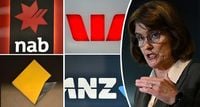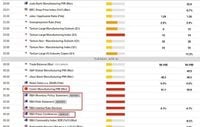The Reserve Bank of Australia (RBA) is expected to leave its cash rate on hold today, April 1, 2025, as economic indicators suggest caution in further monetary easing. Following a significant cut in February, which marked the first reduction in over four years, the cash rate currently sits at 4.1 percent.
In February 2025, the RBA cut the cash rate by 25 basis points, bringing it down from a peak of 4.35 percent, a figure reached after a series of twelve rate hikes between May 2022 and November 2023. This aggressive tightening cycle was a response to rising inflation, which has recently shown signs of easing. Australia's headline inflation rate dropped to 2.4 percent in February, while underlying inflation fell to 2.7 percent, as reported by Yahoo Finance.
Despite these positive trends, the major banks are not anticipating an immediate follow-up cut. Economists from the Big Four banks—Commonwealth Bank (CBA), Westpac, National Australia Bank (NAB), and ANZ—are predicting that the RBA will keep rates steady during this meeting. Gareth Aird, head of Australian economics at CBA, noted that while the recent data has been softer than the RBA's forecasts, it isn't compelling enough to justify another cut at this time.
Market analysts have expressed a range of predictions regarding future rate cuts. CBA, Westpac, and NAB expect three more cuts throughout 2025, with the next likely in May. CBA and Westpac anticipate the cutting cycle will conclude by the end of the year, while NAB foresees one additional cut in the first quarter of 2026. Conversely, ANZ predicts only one more cut in August, bringing the cash rate to 3.85 percent.
As of the latest data, the unemployment rate remains steady at 4.1 percent, another factor influencing the RBA's decision-making process. Economic teams from the banks agree that this stability, along with the recent inflation figures, suggests that a rate cut today is unlikely.
The RBA's decision will be announced at 2:30 PM AEDT today, following a meeting that began on March 31. The anticipation surrounding this decision has been heightened by the recent performance of the Australian stock market. The S&P/ASX 200 Index closed at 7,982 points last Friday but has since dropped by 1.6 percent to just over 7,850 points, leading some investors to hope for a rate cut to boost market confidence.
Interest rate cuts are typically viewed favorably by the share market, as they reduce the returns on safer investments like government bonds, making riskier assets more appealing. However, the current market sentiment reflects skepticism about an imminent cut.
As of March 28, the money markets were pricing in only an 8 percent chance that the RBA would reduce the cash rate at today's meeting. This figure has decreased from a 12 percent chance noted on March 17, indicating a shift in market expectations. The consensus now leans heavily toward rates remaining unchanged, with a 92 percent probability of this outcome.
Looking ahead, the next quarterly inflation data will be released on April 30, and if it falls below the RBA's expectations, it could set the stage for a rate cut in May. For now, the focus remains on today's decision, with many in the financial community viewing this meeting as a critical juncture for monetary policy in Australia.
In summary, while the RBA made a significant move in February by cutting rates, current economic indicators and bank forecasts suggest that a repeat performance is not on the agenda today. Investors and mortgage holders alike will be watching closely as the RBA navigates these complex economic waters.








